Abstract
Purpose
To evaluate the clinical usefulness of KCL 990® for the treatment of dry eye with meibomian gland dysfunction (MGD).
Methods
Patients (n = 54 eyes, 27 subjects) diagnosed with dry eye with MGD were recruited for a prospective, one-month clinical trial. Patients received a twice-a-day 15-minute treatment using the KCL 990®. Effectiveness parame-ters included patient symptom scores using the Ocular Surface Disease Index (OSDI) questionnaires, tear osmolarity measured with TearLab® (TearLab Corporation, San Diego, CA, USA), classical tear break-up time (TBUT), and objective TBUT value using an Optical Quality Analysis System (OQAS®, Visiometrics, Castelldefels, Spain). Data are presented for pre-treatment (baseline) and at 1 week and 1 month post-treatment. An objective TBUT value was estimated in each eye when the optical scattering index (OSI) started to increase consistently, and data were obtained at pretreatment (baseline) and at 1 month post-treatment.
Results
The symptom scores on OSDI questionnaires, tear osmolarity, and tear break-up time improved significantly from baseline to one week (p < 0.05). This improvement was maintained with no significant regression at 1 month (p < 0.05). The objective TBUT value decreased significantly at 1 month (p < 0.05).
References
2. Lemp MA. Report of the National Eye Institute/Industry workshop on clinical trials in dry eyes. CLAO J. 1995; 21:221–32.
3. Lee SH, Tseng SC. Rose bengal staining and cytologic character-istics associated with lipid tear deficiency. Am J Ophthalmol. 1997; 124:736–50.

4. Korb DR, Greiner JV. Increase in tear film lipid layer thickness fol-lowing treatment of meibomian gland dysfunction. Adv Exp Med Biol. 1994; 350:293–8.

5. Key JE. A comparative study of eyelid cleaning regimens in chron-ic blepharitis. CLAO J. 1996; 22:209–12.
6. Smith RE, Flowers CW Jr. Chronic blepharitis: a review. CLAO J. 1995; 21:200–7.
8. Shine WE, McCulley JP. Meibomianitis: polar lipid abnormalities. Cornea. 2004; 23:781–3.
9. Goto E, Monden Y, Takano Y. . Treatment of noninflamed ob-structive meibomian gland dysfunction by an infrared warm com-pression device. Br J Ophthalmol. 2002; 86:1403–7.

10. Freedman HL, Preston KL. Heat retention in varieties of warm compresses: A comparison between warm soaks, hard-boiled eggs and the re-heater. Ophthalmic Surg. 1989; 20:846–8.

11. Blackie CA, Solomon JD, Greiner JV. . Inner eyelid surface temperature as a function of warm compress methodology. Optom Vis Sci. 2008; 85:675–83.

12. Nelson JD, Shimazaki J, Benitez-del-Castillo JM. . The inter-national workshop on meibomian gland dysfunction: report of the definition and classification subcommittee. Invest Ophthalmol Vis Sci. 2011; 52:1930–7.

13. Schiffman RM, Christianson MD, Jacobsen G. . Reliability and validity of the Ocular Surface Disease Index. Arch Ophthalmol. 2000; 118:615–21.

14. Szalai E, Berta A, Szekanecz Z. . Evaluation of tear osmolarity in non-Sjögren and Sjögren syndrome dry eye patients with the TearLab system. Cornea. 2012; 31:867–71.

15. Benito A, Pérez GM, Mirabet S. . Objective optical assessment of tear-film quality dynamics in normal and mildly symptomatic dry eyes. J Cataract Refract Surg. 2011; 37:1481–7.

16. Mori A, Shimazaki J, Shimmura S. . Disposable eyelid-warming device for the treatment of meibomian gland dysfunction. Jpn J Ophthalmol. 2003; 47:578–86.

17. Matsumoto Y, Dogru M, Goto E. . Efficacy of a new warm moist air device on tear functions of patients with simple meibo-mian gland dysfunction. Cornea. 2006; 25:644–50.

19. Paranjpe DR, Foulks GN. Therapy for meibomian gland disease. Ophthalmol Clin North Am. 2003; 16:37–42.

20. Shine WE, McCulley JP, Pandya AG. Minocycline effect on mei-bomian gland lipids in meibomianitis patients. Exp Eye Res. 2003; 76:417–20.

21. Olson MC, Korb DR, Greiner JV. Increase in tear film lipid layer thickness following treatment with warm compresses in patients with meibomian gland dysfunction. Eye Contact Lens. 2003; 29:96–9.

22. Goto E, Monden Y, Takano Y. . Treatment of non-inflamed ob-structive meibomian gland dysfunction by an infrared warm com-pression device. Br J Ophthalmol. 2002; 86:1403–7.

23. Methodologies to diagnose and monitor dry eye disease: report of the Diagnostic Methodology Subcommittee of the International Dry Eye WorkShop (2007). Ocul Surf. 2007; 5:108–52.
24. Behrens A, Doyle JJ, Stern L. . Dysfunctional tear syndrome. a Delphi approach to treatment recommendations. Cornea. 2006; 25:900–7.

25. Lane SS, DuBiner HB, Epstein RJ. . A new system, the LipiFlow, for the treatment of meibomian gland dysfunction. Cornea. 2012; 31:396–404.

26. Benelli U, Nardi M, Posarelli C, Albert TG. Tear osmolarity meas-urement using the TearLab Osmolarity System in the assessment of dry eye treatment effectiveness. Cont Lens Anterior Eye. 2010; 33:61–7.

27. Utine CA, Bıçakçı gil M, Yavuz S, Çiftçi F. Tear osmolarity meas-urements in dry eye related to primary Sjögren’s syndrome. Curr Eye Res. 2011; 36:683–90.

28. Jacobi C, Jacobi A, Kruse FE, Cursiefen C. Tear film osmolarity measurements in dry eye disease using electrical impedance technology. Cornea. 2011; 30:1289–92.

29. Benito A, Pérez GM. . Objective optical assessment of tear-film quality dynamics in normal and mildly symptomatic dry eyes. J Cataract Refract Surg. 2011; 37:1481–7.

30. Pult H, Riede-Pult BH. Non-contact meibography in diagnosis and treatment of non-obvious meibomian gland dysfunction. J Optom. 2012; 5:2–5.

31. Geerling G, Tauber J, Baudouin C. . The international work-shop on meibomian gland dysfunction: Report of the sub-committee on management and treatment of meibomian gland dysfunction. Invest Ophthalmol Vis Sci. 2011; 52:2050–64.

33. Greiner JV. A single LipiFlow® Thermal Pulsation System treat-ment improves meibomian gland function and reduces dry eye symptoms for 9 months. Curr Eye Res. 2012; 37:272–8.
Figure 1.
The objective TBUT parameter is defined as the time that the optical scattering index (OSI) starts to increase con-sistently (black arrow).
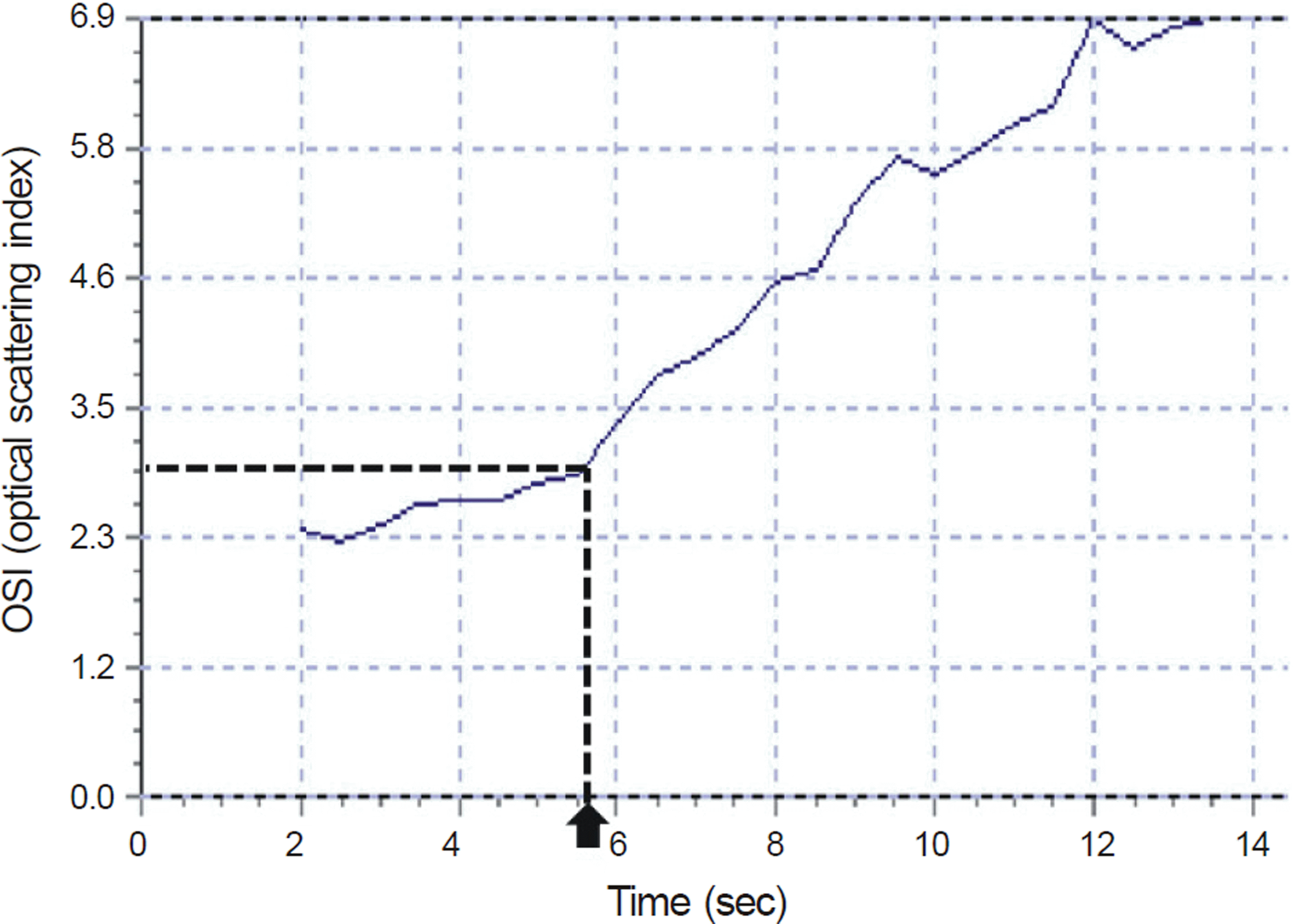
Figure 3.
The mean Ocular Surface Disease Index (OSDI) at baseline, 1 week, and at 1 month (* p < 0.05).
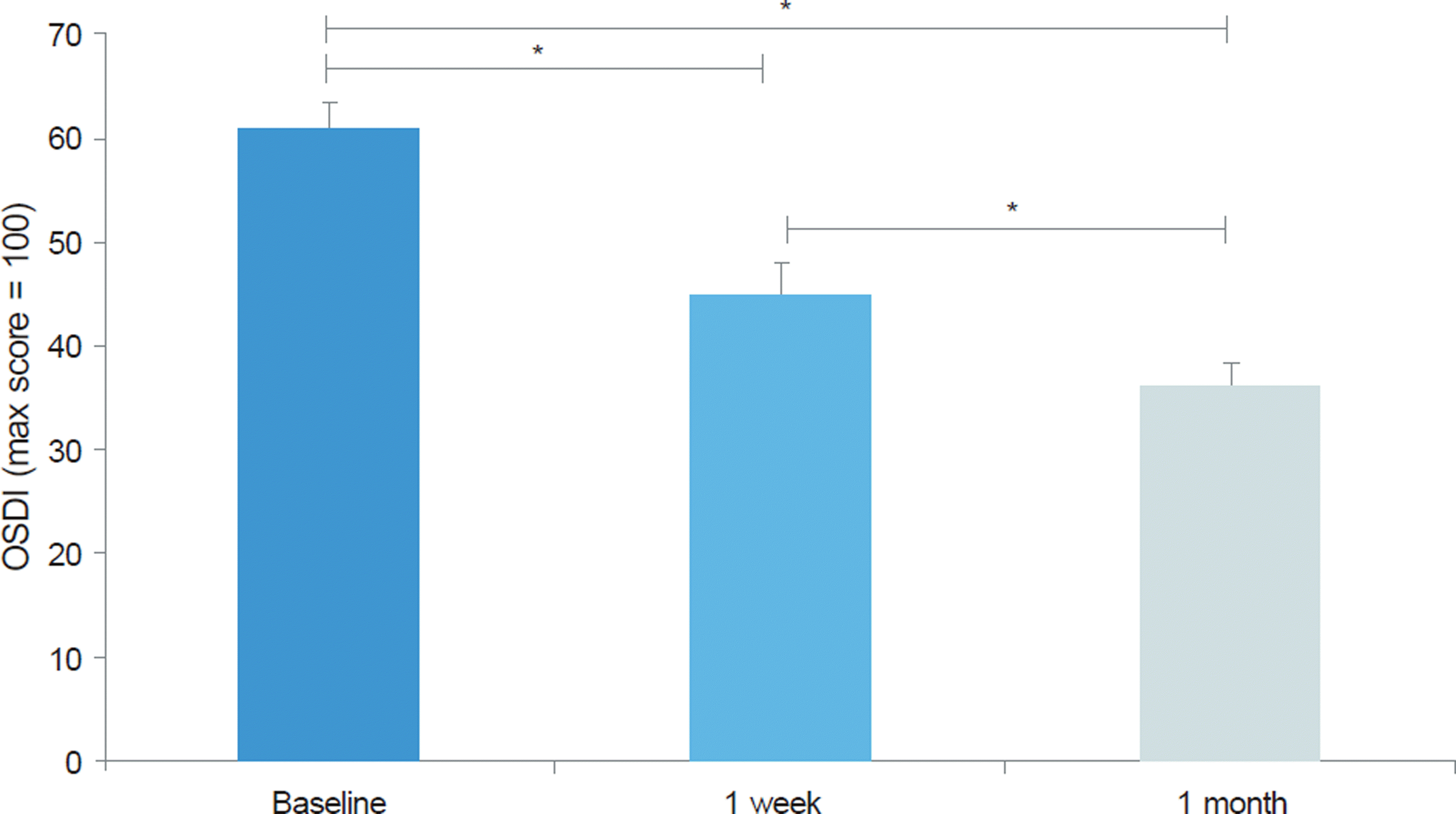
Figure 5.
The mean clinical tear break-up time (TBUT) at baseline, 1 week, and at 1 month (* p < 0.05).
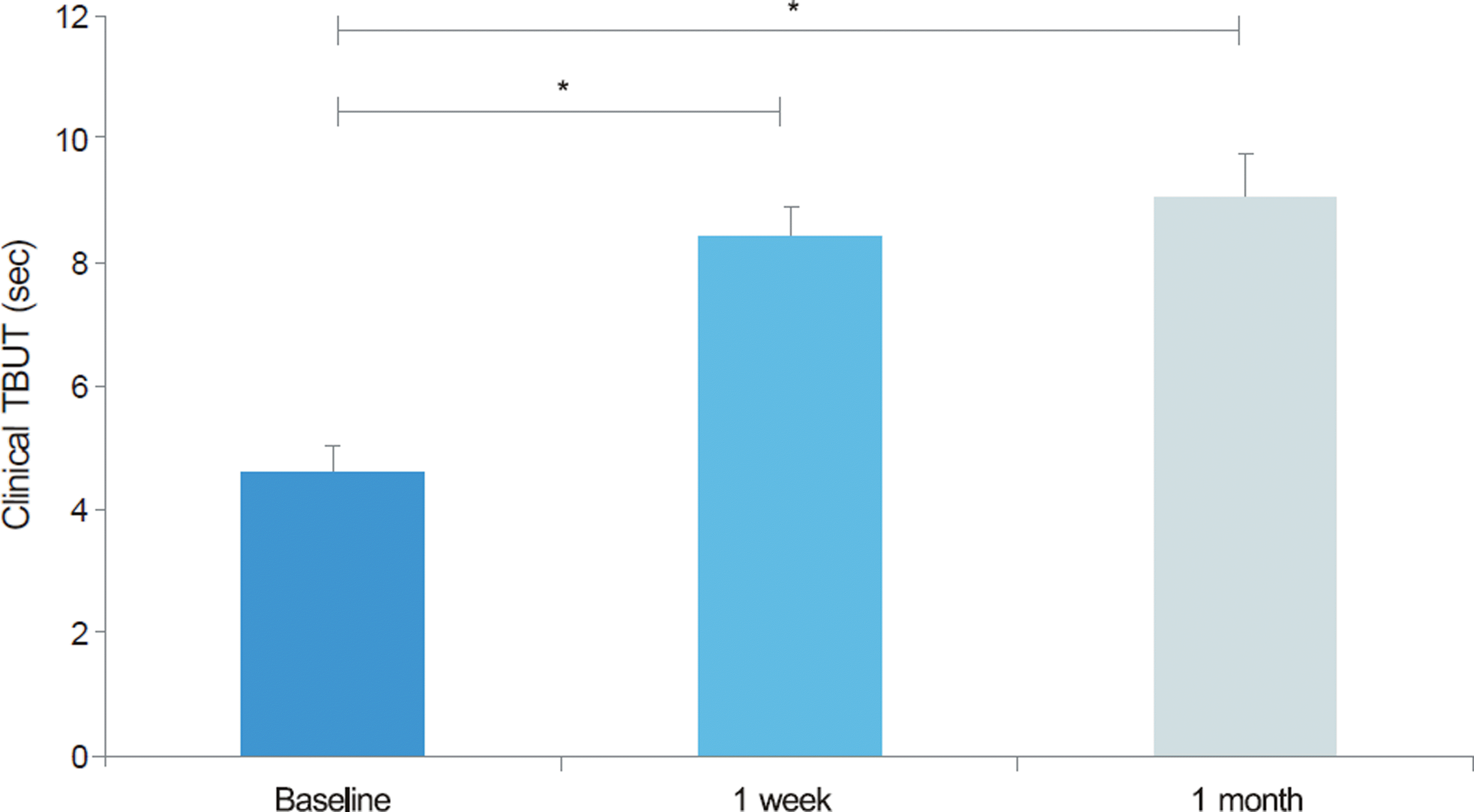




 PDF
PDF ePub
ePub Citation
Citation Print
Print


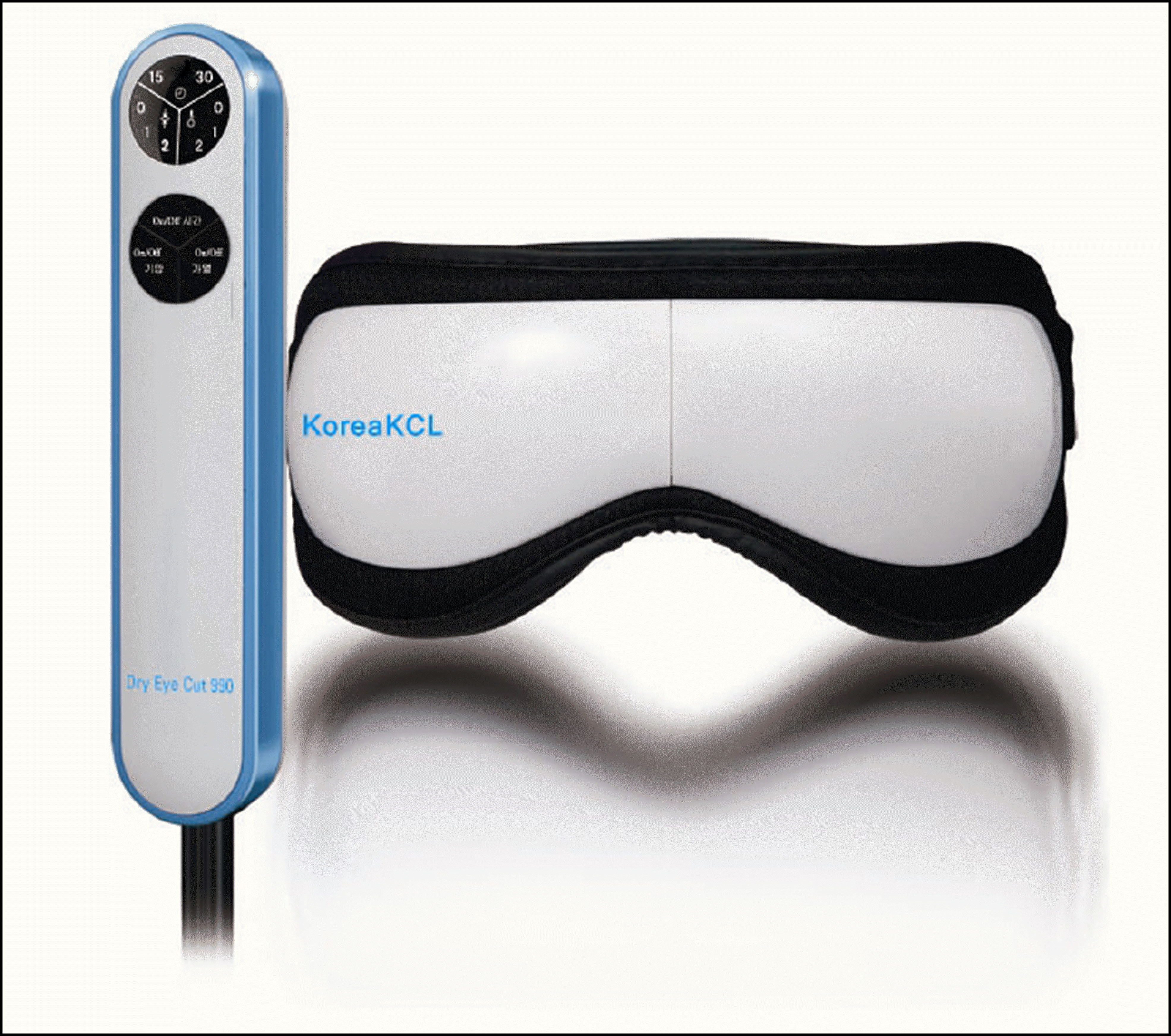
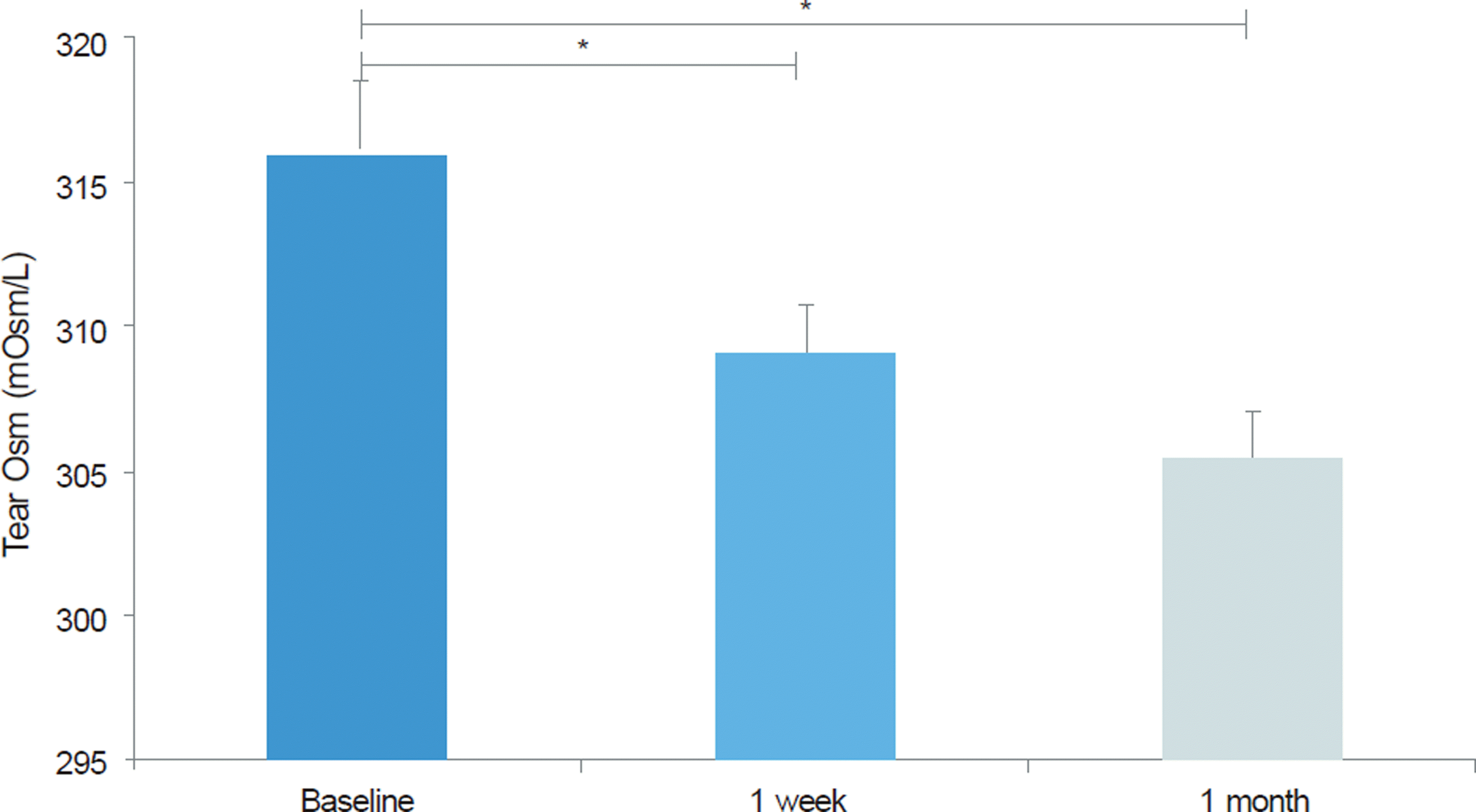
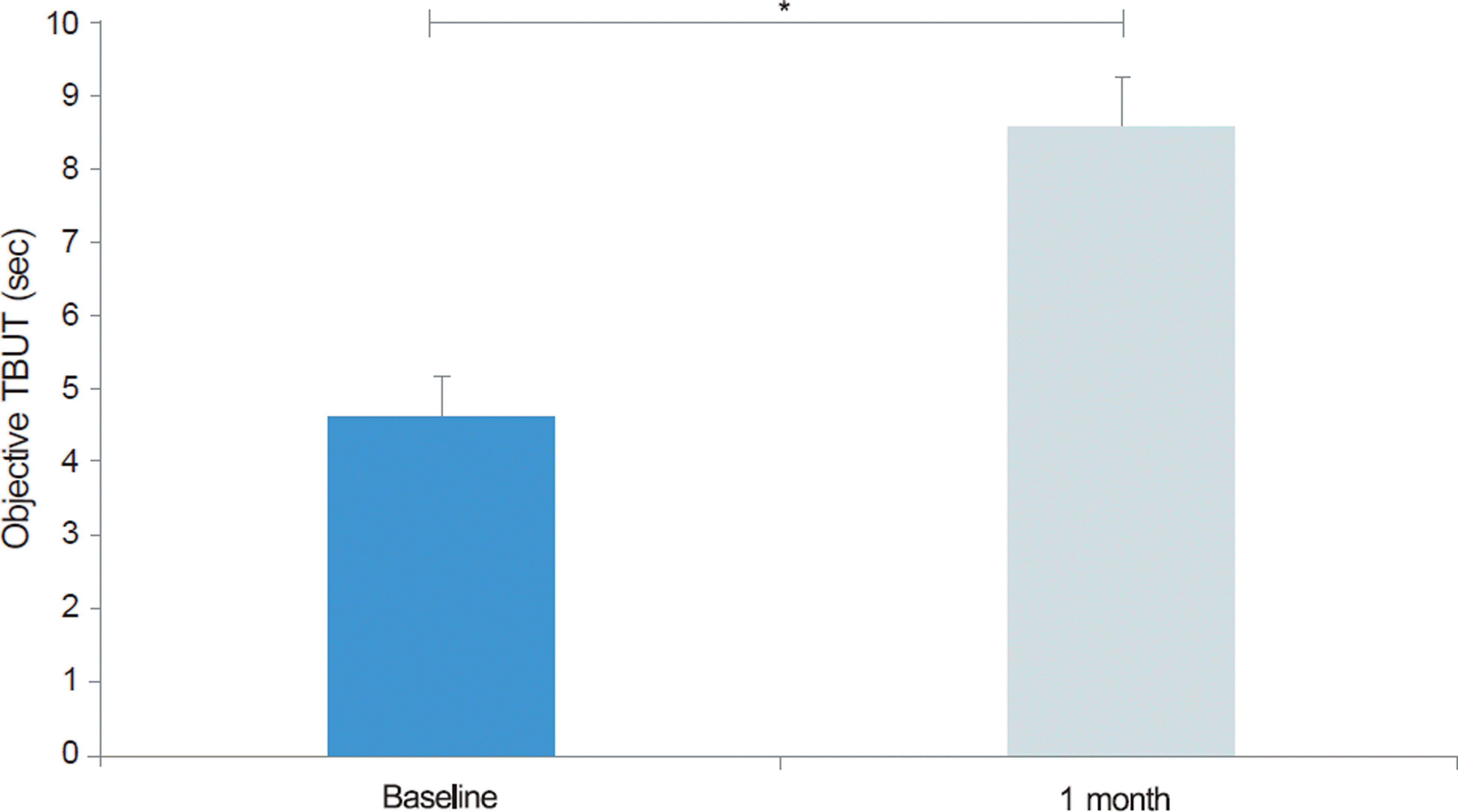
 XML Download
XML Download